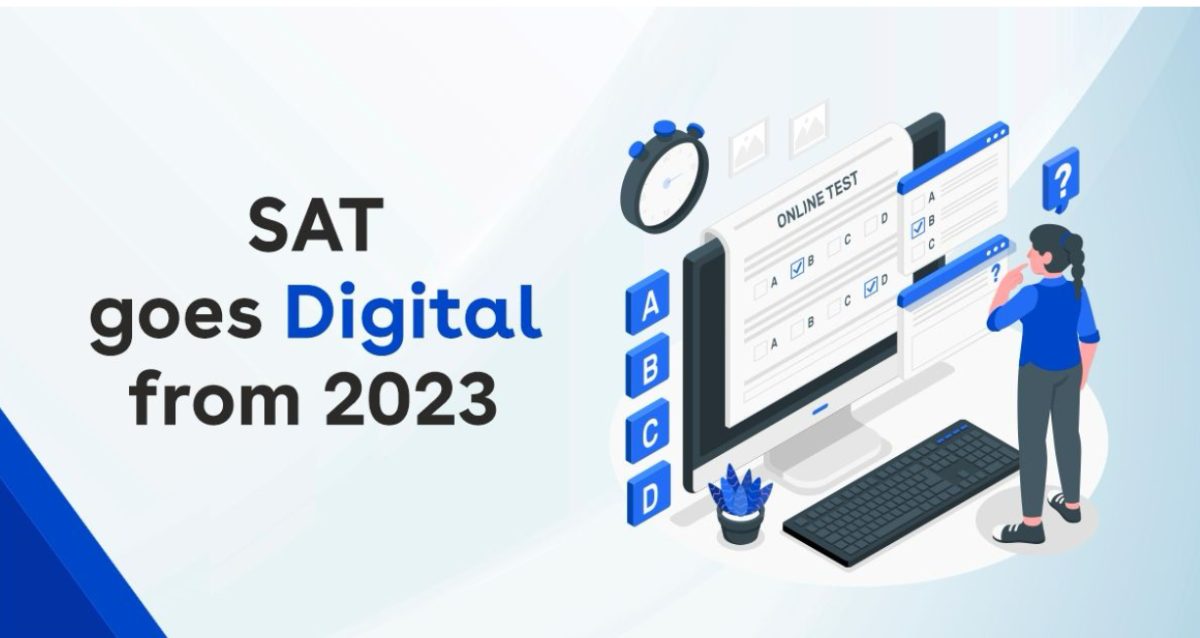The SAT dates back to 1926 and originally stemmed from a U.S. Army IQ test. This standardized IQ test rapidly spread to be used by colleges as part of their admissions process. By 1935, Harvard required all of its college applicants to submit SAT scores. Throughout the entire history of the SAT, it has been modified only slightly and rarely critiqued. It is now facing the most drastic shift in nearly a century, in a seismic switch to digital format this upcoming spring.
The first question that comes to mind about the switch to a digital SAT format is, “Why make this change?” According to the College Board website, the COVID-19 pandemic was the main impetus for the new digital SAT. The College Board website explains that students are now more regularly taking exams and doing schoolwork digitally, “and the SAT shouldn’t be the exception.” The College Board goes on to explain that they are “listening to input and adapting to ensure we continue to meet the needs of students and educators.”
The new digital SAT will not simply be the traditional pencil and paper test projected onto a laptop screen. The entire format is changing. For instance, in the reading and writing sections, there will be shorter passages that have just one question related to that text, rather than long passages with multiple questions relating to a single passage. The College Board website also states that the word problems in the math section will be more concise than the paper SAT.
Furthermore, the digital SAT is expected to provide a number of tools that the paper SAT could not offer, such as the ability to flag questions to return to them later in the exam. There will also be an embedded graphing calculator in the digital SAT program (don’t sweat this change just yet – students can still bring their own physical calculator, at least for now). Students will also have the option to have a countdown clock visible to them on the top of their testing screen that will alert them when they are running low on time. The digital SAT also gives each student taking the exam a unique test form, making it effectively impossible to share answers with other students seated nearby.
The College Board website also notes that both the number of questions and the overall time allotted for a student to take the test will be shorter in the digital SAT format and will give students more time per question. Whereas the paper and pencil test version is three hours, the digital test will be two. This is because the technology applied in the digital test format is able to measure the skills and knowledge of a student more efficiently.
The College Board website explains that the digital SAT will be divided into two parts called “modules.” Test-taking students must answer a set of questions in the first module before moving on to the second module. The difficulty of the questions a test-taker receives in the second module is dependent on the test-taker’s performance on the questions in the first module. This is called “adaptive testing.” More than thirty years of research show the benefit of this method of testing, including but not limited to shorter tests, questions that test the student’s understanding of the material, more secure testing, and a more efficient and precise way to assess each student’s abilities.
In order to practice for the digital SAT, students can download the Bluebook testing application. Students will have the opportunity to take the official SAT digital practice test in the fall of 2023 so they can prepare for the full digital testing experience being rolled out this upcoming spring.
New Digital SAT
February 18, 2024
0
More to Discover
About the Contributor
Grace Kollander ’25, Editor-in-Chief







